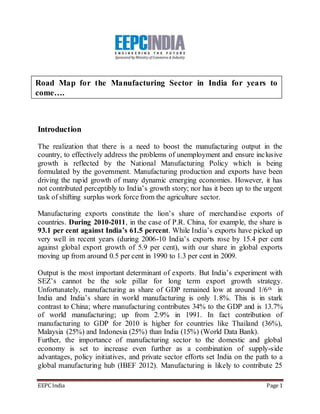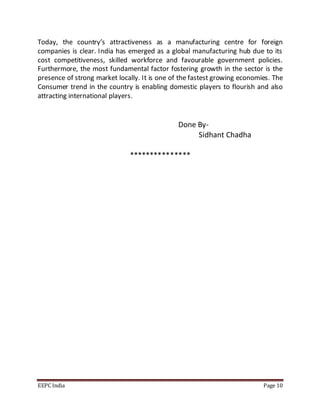The document outlines the current state and future roadmap for India's manufacturing sector, emphasizing the need for growth to boost GDP and employment while addressing issues like trade deficits and competitiveness. It highlights India's potential in engineering, the challenges faced by small and medium enterprises, and the necessity for policy reforms to increase exports and improve infrastructure. Key recommendations include strengthening the manufacturing ecosystem and aiming for a 25% GDP contribution from manufacturing by 2025.









